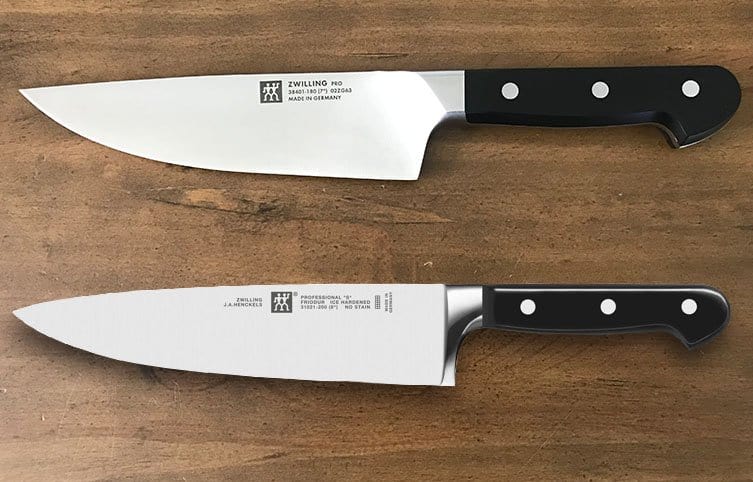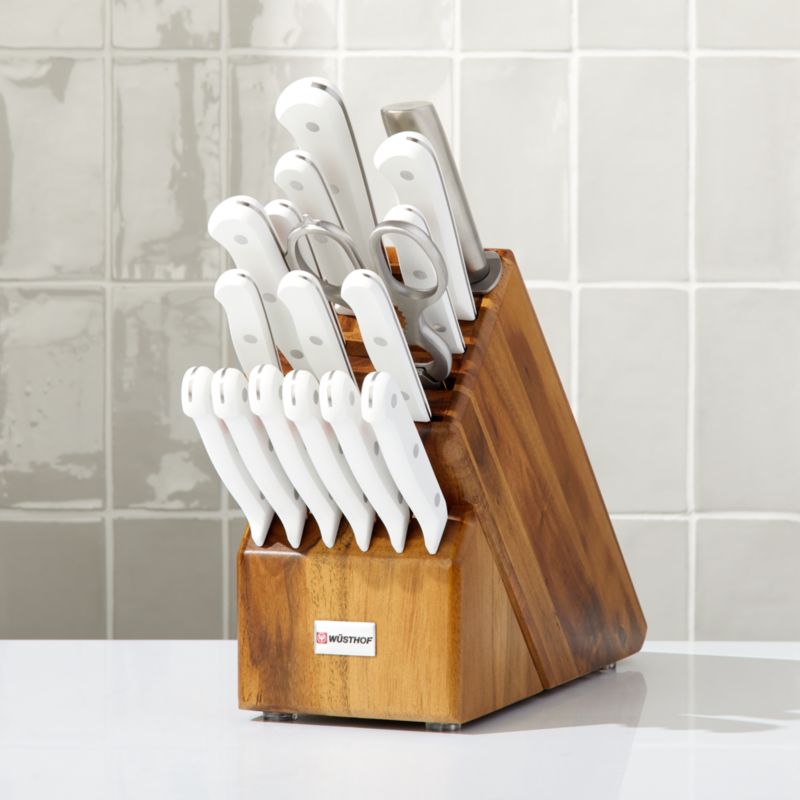Kitchen knives are essential pieces of equipment that you invest in for your culinary love. Whether you’re a professional chef or a keen gastro newbie, a perfect set of knives is a must for any kitchen.
Indeed, cooking becomes much more manageable and improves if you have the right blade at your fingertips. Good quality kitchen knives reward you with safety while enhancing your culinary skills simultaneously.
We have diced, brunoise, and julienned our way through various kitchen knife sets to bring you this article that will surely help you pick the ideal knife set.
Types of Blades
There are two basic methods for making knives: forging and stamping. Additionally, these are the primary factors that determine the cost. Both of these types of blades come with their own set of pros and cons.
Stamped
Stamped blades are machine-made from large continuous sheets of stainless steel. The machine stamps out the shape of a knife, and then a blade is attached to it. Then, the knife goes through a process of sharpening and polishing.
Stamped knives do not have the best reputation. However, the manufacturing process constantly enhances over time. Hence, the quality of stamped knives is improving. Chefs and culinary professionals are in perpetual debate about whether forged or stamped knives are better.
Stamped knives are flexible, and they are the way to go if you require an arsenal of kitchen knives for different purposes on a low budget.
Forged
The main body of a forged knife is a single steel bar, and it is generally more robust and stiff. The metal heats up till it is red-hot and is then molded into a strong blade. Forging requires either a specialized automated machine or a craftsman’s expertise to yield a finished blade.
Forged knives are so durable that they can even outlive the chef if you maintain them properly! Isn’t that fascinating? They are better in performance, more durable, and extremely easy to use.
Although the blade is heavier than stamped, the weight is well balanced, so they do not feel heavy when used.
Both these types of knives come in a wide variety and range of prices. It is best to never compromise on the quality of a kitchen knife set that you will frequently be using.
Your Four Basic Kitchen Knives
Chef’s Knife
Chef knives are multi-purpose knives that are about eight inches long. These jacks-of-all-trades are a combination of stainless steel and carbon steel.
Originating from France, the distinctive features of the knife include a prominent point and a sloping curve, which allow you to master the signature rocking motion technique.
If you want to purchase a chef knife, make sure that you get a fully forged one. They excel at simple tasks such as chopping herbs or mincing garlic and more complex ones like slicing beef. Also, they are great for carving. A multi-purpose chef’s knife is the most common choice amongst household kitchens as it is practical and very efficient.
Paring Knife
A paring knife tends to be lightweight. It has a slim and short blade with a pointed tip. These features make it easy to handle while doing the delicate cutting. This type of knife is, above all, for cutting fruits and slicing vegetables. However, you can also use it to peel, trim or remove seeds.
Utility Knife
Utility knives have a sharper tip that works best when you need to do more intricate work. This knife has a similar appearance to the chef’s knife, but it is slimmer and compact. All in all, it is more suitable for detailed tasks. When the chef’s knife seems a bit too big to do the job, you can always go for your utility knife to do a more precise cutting.
Serrated Knife
A serrated knife, also known as the bread knife, is a handy utensil that includes a long blade paired with a sharp serrated edge. The serrations are perfect for slicing softer items such as cakes, pastries, or pieces of meat like rib or brisket.
The serrated edge makes it ideal for slicing through all sorts of bread: including the crusty ones and even bagels. The grooved edge prevents the crushing of softer items during slicing.
If you are interested to read more of our reviews you can check our best knife set under 200 review.
Beyond the Basics – Other Types of Knives
Cleaver
Cleavers are knives that butcher raw meat or ham with their flat, rectangular blade. This type of knife is one of the heaviest, and sometimes it features a hole near the spine of the blade for hanging purposes.
Salmon Knife
These knives have very long and flexible blades with the main purpose of filleting large fish. The double-edged knives are slender enough to easily cut through the skin and flesh without damaging the fish. Consequently, they effectively minimize waste and reward you with neat fillets.
Nakiri Knife
Nakiri knives are a smaller and slimmer version of the cleavers. They are the go-to tool for chopping vegetables in a single motion on the board. Also, they’re great for garnishing, as you can use their sharp edge to make thin, even slices.
Peeling Knife
These knives feature a slightly curved blade with an extremely sharp edge that you can use to peel fruits and vegetables. The sturdy handles and rigid blades prevent the small knife from slipping while peeling, subsequently making it much safer and comfortable.
Conclusion
Finally, don’t forget that choosing the right blade for the real purpose is an investment in your love for food and cooking. Apart from knowing how to choose a knife set, the way you maintain your knives can hugely impact their durability. Remember to store them in knife blocks or magnetic strips to prevent them from rusting, and always keep them neatly in the box to avoid accidents.

Gary Portman is the founder and main author of Knivesadvice.com. With his extensive knowledge and experience, he is committed to assisting people in choosing the perfect knife for their needs. Through his articles, Gary shares valuable insights on various aspects of knives. With his expertise, readers can make informed decisions and find a knife that is tailored to their preferences and requirements. You can find more info about Gary here.


